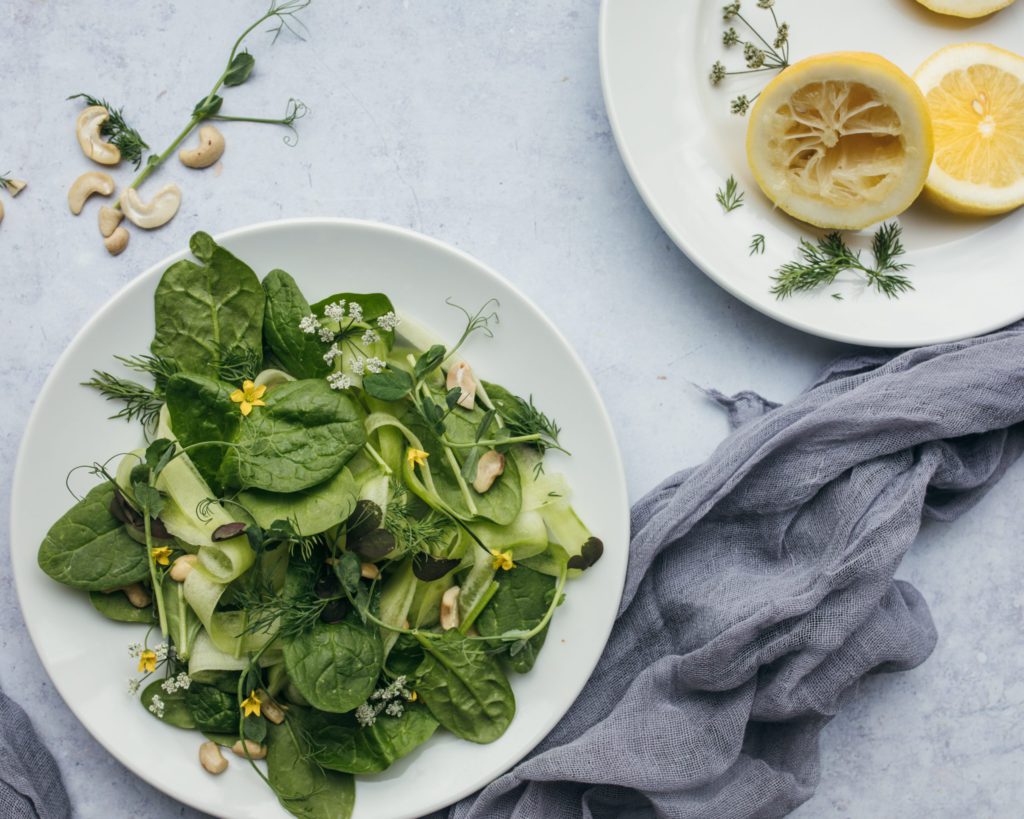
Dubbed the ultimate elixir of good gut health, fermented foods are one of the latest key trends and you’ll find them popping up as the latest “must include” if you’re serious about improving your health.
Whilst there’s a lot of hype, I also find there’s a lot of uncertainty surrounding fermented foods when it comes to why it’s actually good for us, what foods are these, how to eat it and even how to make them?
Does this sound like you?
What exactly are fermented foods?
The process of fermentation is the bacterial conversion of sugars and starches to acids (as well as other by-products). This process also encourages good bacteria such as Lactobacilli and Bifidobacteria to flourish. Consequently, this makes fermented food a good source of good bacteria or probiotics.
The breakdown of these sugars and starches as part of the fermentation process makes digestion easier and they also help to break down nasty bacteria that may be lurking in the gut such as E.coli or C.difficile. Historically, fermentation has been used as a process to enhance shelf life and preserve foods as the acids produced to prevent the growth of dangerous bacteria.
Foods such as sauerkraut, kimchi and kefir are some of the more known foods that have become popular in recent years, but there are many more common foods that you may not realise are also fermented foods; for example, tea, bread, cheese and yoghurt. It is likely that you are already eating these foods and therefore already eating live bacteria.
Why are fermented foods good for you?
Good gut health is fundamental to our overall health; indeed many health problems can be alleviated if you optimize the efficiency of your gut; words improving the balance of gut bacteria and ensuring a healthy gut flora or microbiome. Symptoms of IBS, allergies and intolerances and low energy levels are all influenced by gut health.
Making sure your gut microbiome is healthy and active is key and this entails ensuring a healthy balance of good bacteria vs bad bacteria. These good bacteria are produced as a result of the fermentation process and therefore by eating these foods, you will naturally be introducing these strains of good bacteria and therefore ensuring a healthy gut flora
Recent research by King’s College London also links a healthy gut environment with the way our body processes and distributes fat and an accumulation of fat around the middle can be attributed to an imbalance of gut flora. The study concludes that the response of the microbiome and it’s the effect on our health and weight is largely controlled by the food we eat rather than our genes. Thus making changes to your diet choices and bacterial balance within the gut can help to mitigate the risk of accumulating fat around the middle. Probiotics, found in fermented foods can play an effective role in altering the gut environment favourably, alongside a diet is rich in fibre and avoids refined sugars.
How do I include fermented foods?
If you’d like to make a more conscious effort to include fermented foods in your daily choices, the options are plentiful but you may not be entirely sure what that food actually is? Here are 10 of the common fermented foods options you may come across which can help improve your gut health:
-
Yoghurt
Yoghurt is one of the most convenient probiotic sources and is made by fermenting milk using a live bacteria culture. It is important to choose varieties that are “live” and to consume the yoghurt within the “use-by” date to ensure live and active cultures. Raw, unpasteurized yoghurt is an even richer source. Always opt for plain, full-fat versions which do not contain added sugar, otherwise, the sugar will act as “food” for the bad bacteria already present in the gut and will counteract the benefits of consuming beneficial bacteria.
Want to make your own yoghurt? It’s easier than you think and you’ll know exactly what’s in it; just milk (any) and a starter culture (using a live yoghurt)…no preservatives or other nasties. Here’s a great Yoghurt Maker with a digital timer with individual jars, so you can keep an eye on your portions. BUY NOW
-
Sauerkraut
Traditional Sauerkraut (German cabbage) has been prepared for centuries by soaking the cabbage in water and salt to produce a sour, fermented cabbage pickle. A small serving will provide a good amount of beneficial bacteria as well as good fibre. It is important to choose raw sauerkraut or it can be homemade using organic cabbage and Himalayan salt for an even more nutritive option. Try it with a salad or alongside cheese in small quantities, due to its high salt content.
Making your own sauerkraut is very easy and can often allow you to include other flavours and combinations for a really tasty choice. If you’re keen to give fermentation a go, it may be worth investing in a jar that allows you to release the gases that are produced whilst the fermentation process takes place. This simple fermentation jar is all you need! They do vary in size depending on how much you want to make. BUY NOW
-
Kefir
Kefir is a fermented milk drink, effectively a yoghurt drink with a sour taste and a little “fizz”. It is full of calcium as well as beneficial bacteria. As with yoghurt, these probiotics help to break down the lactose in the milk, making it easier to digest for those with lactose intolerance.
-
Kombucha
Kombucha is a fermented tea drink with a slightly fizzy and tangy taste and can be drunk as a good probiotic alternative to fizzy drinks, which are laden with sugar or artificial sweeteners. It can be made from black or green tea and uses a yeast culture, known as a “SCOBY” (This stands for Symbiotic Culture of Bacteria and Yeast). This combination converts the sugar into acid and it is worth noting that it can also contain some alcohol as a result of the fermentation process. Tea, in particular, Green tea is also rich in antioxidants.
-
Kimchi
This spicy fermented cabbage originates from Korea and is similar to German sauerkraut. It is rich in beneficial bacteria and thought to have anti-ageing properties as well as being an immune booster. It is important to note the high salt content and therefore it should be consumed in smaller quantities as part of a healthy balanced diet.
-
Miso
Miso is a fermented soybean paste but it can also be made from rice or barley. It has a strong, salty flavour and can be added to soups, stews, salad dressings or marinades for a delicious probiotic boost, sometimes known as “umami”. It is nutrient-rich; containing good protein and vitamins B, E and K. Once opened it should be stored in the fridge and ideally it should not be added to boiling soups, in order to preserve the live bacteria.
-
Tempeh
Tempeh, originally from Indonesia, is traditionally made from soybeans and a yeast culture starter that has been allowed to ferment, It has a chewy texture and the soybeans are visible when sliced. Similar to tofu (which is not fermented), it can often be used instead of meat as a plant-based protein for a vegan alternative. Ideally, choose a pasteurized version and it can be eaten uncooked or cooked, which reduces the bitterness slightly and allows it to absorb flavours easily. As a complete protein, soybeans provide all the essential amino acids which much be obtained from the diet and it is also a rich source of calcium, magnesium and iron and therefore a good nutritious choice.
-
Natto
Natto is also prepared with soybeans that have fermented to produce beneficial bacteria. It is a good source of vitamin K2, which is essential for heart health and also contains an anti-clotting agent, Nattokinase, which protects the heart and brain as well as lowering blood pressure.
-
Pickles
Raw pickles, in general, are an easy way to introduce fermented foods into your diet. Be sure to choose varieties that have been pickled without added sugar.
-
Lassi
This traditional Indian drink combines yoghurt with milk/water and is sometimes flavoured with fruit or spices. The probiotic-rich drink is traditionally made from grass-fed goat’s milk making it easy to digest as well as providing good bacteria in the gut. Vegan alternatives can be found with organic coconut or almond milk yoghurt.

Making your own fermented foods (a beginner’s guide)
You can use a variety of vegetables as a base; for example cucumber, carrot, broccoli, radish, fennel, garlic and cauliflower.
- Choose a glass jar with a good seal. Ensure your jars are very clean to avoid any bacteria before you begin. (Using them straight from the dishwasher will ensure this).
- Chop the vegetables into bite-size pieces or shred/slice using a food processor if you prefer
- Consider adding some fresh herbs such as coriander, dill or rosemary or garlic, ginger and whole peppercorns
- In a large bowl, layer the vegetables with salt, massaging the salt into the vegetables. Leave for 5mins and then repeat the process, so the vegetables are eventually sitting in their own brine.
- Cover the surface with cling film and weigh the vegetables down with a couple of heavy plates (or other suitable weights) to ensure that the vegetables stay under the saltwater.
- Cover the entire bowl with cling film and store it at room temperature away from direct sunlight (or in the dark) and allow it to ferment over the following few days. It is important to lift the cling film slightly to release the build-up of bubbles/gases, but take care to close as quickly as possible afterwards.
- After around 5 days, the vegetables should be ready to eat. If they are not quite fermented or pickled, allow them to develop for longer. Once they are the flavour and sourness you like, transfer them into the prepared jars so they are packed tightly and they can then be stored in the fridge safely for around 6 months.
Don’t forget about them – use a little daily to boost your beneficial gut bacteria!
Start slowly and build up as your gut becomes accustomed.
Have you made your own fermented foods? Do share your experiences in the comments below and tips are always welcome!
I originally wrote this article for HEALTHISTA
Invest in your health:
[gosservices gos_attr_set=”invest-in-your-health” gos_attr_layout=”default” gos_attr_columns=”3″ gos_attr_vertical_layout=”disabled” gos_attr_parallax=”disabled” gos_attr_crop=”disabled”][/gosservices]








0 Comments